






|
2009 |
 |
 |
 |
 |
 |
 |
 |
|
Picture of the Week: Traditional highlander ornaments on a marketplace in Zakopane, Poland, last July; sunny, late afternoon.
Camera: Olympus E-620 Lens: 12-60 mm F/2.8-4.0 ZD ED SWD at 60 mm Exposure: Aperture priority (-0.3 EV); 1/1000 s at F/6.3, ISO 200 Postprocessing in Corel Photo-Paint. |
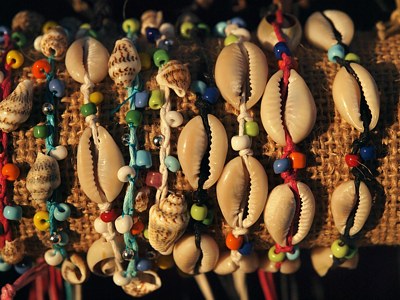
|
|
The new Quest is out, not surprisingly, as John is producing quarterly issues with the dependency of a Swiss watch. I read each issue cover to cover, and this time was no exception. The main feature this month is the second part of the lecture given in 2005 by the late Yosihisa Maitani, the legendary Olympus camera designer of the Pen and OM era, whose impact on this area (not just Olympus) cannot be overestimated. This is a must-read for any camera enthusiast. A shorter piece, Weeding My Camera Collection by Terry Hardy, is also a delightful reading. My own contribution, EXIF Information in Olympus Image Files, will be posted at this site around May (well after the next Quest is released). In the meantime, I just posted the Web version of another Quest article: Adding Lenses to Your E-System Setup, originally published last year and updated in a few places as needed. Have a look. | |
|
The E-600: not really a new model from Olympus, but rather a very slight modification of the E-620, supposedly intended to bring the cost a bit down in order to make the camera more competitive in price. While Olympus does not explicitly list the changes, the specs indicate that most of the changes (simplifications) are just in the firmware: omission of some (three?) "creative modes", of aspect ratio cropping, and of in-camera double exposure. Actually, I will not be missing any of these features, although I do not quite understand how would a removal of some tertiary-importance code from the firmware make a camera cheaper to make. The only visible (and cost-saving) change is that the control buttons in the back are no longer illuminated. I know this is 70% cosmetics, but the illumination looked good, and it could be quite helpful under some circumstances. (Well, at least fewer things may go wrong now.) Otherwise both cameras seem to be identical, so, with those minor exceptions, all I wrote about the E-620 applies to the new model as well. It remains unclear if both will be manufactured concurrently, but I don't expect this to happen. This the second such non-event from Olympus this year, after the E-450. Perhaps the market would not buy a camera model more than six months old? Certainly, a disoriented consumer is a good consumer; at least many marketing people (Olympus or not) seem to think so. Are we going to see an E-610 in March, with one more "creative mode" added? On Tuesday I go to Poland again, as every December for the last 15 years, so do not expect any updates here until mid-January. Merry Christmas (or happy Hanukah, or completely-for-no-reason holiday wishes) everyone, and a Happy New Year! See you back here in 2010. | |
|
The Olympus E-P1: only last September was I able to familiarize myself with this camera, to actually use it. My E-P1 article was posted last June, but it was available only "by invitation"; now, updated, it becomes publicly accessible, if you care what I think about it. The E-P1 is an attractive camera with one omission, disqualifying it for some users (certainly for me): no eye-level viewfinder, except for one working just with a 17 mm lens. This is why I decided against getting one. | |
.t.jpg)
E-P2 with the VF-2 finder; picture by Olympus |
Less than six months from the E-P1 release Olympus announced the E-P2, with some minor improvements over its predecessor, but also one significant addition: a multi-pin accessory port on the camera back, just below the hot shoe (where an SLR would have an eyepiece). This allows E-P2 to use an attachable eye-level electronic viewfinder (a solution first applied by Ricoh), vastly improving the camera, at least from where I stand.
This makes the E-P2 very similar to the DMC-GF1 by Panasonic. Actually, each of these two has some advantages and disadvantages compared to the other, and choosing between them may be a tough task, largely dependent on your personal preferences and priorities. Check my E-P1 write-up for more on the E-P2. |
|
I am back after another break in the work on the site contents; again, my daytime job had to take precedence. I hope that at least for the next few months I'll be able to spend more time here.
Related to the E-620: The Tatra Mountains in Poland is a new gallery page, with some images I took with that camera during the trip last July. Pictures from that trip have been also used in the E-620 Image Samples, Part 2. Postprocessing of these images finally (?) convinced me that while the '620 delivers very pleasing images and looks really great on test sheets, somehow I like better the results from the E-3 or E-30, which are more "photographic". I cannot prove this, as it may be hard (if possible at all) to measure, but that's what I'm thinking, having used all three cameras extensively. Olympus E-620 with 12-60 mm F/2.8-4.0 ZD at 45 mm.
Exposure: aperture priority
Postprocessing in |
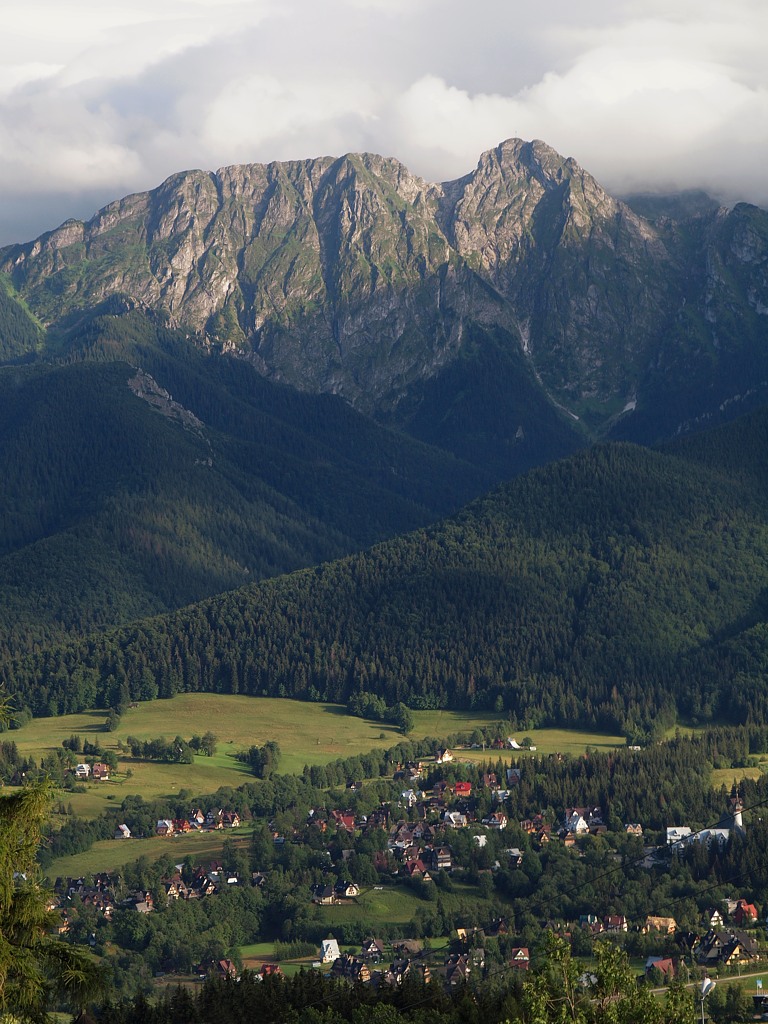
|
|
Another new E-620 article: Noise Filtering and Sharpness in the E-620, presenting 120 image samples at various parameter combinations. Not surprisingly, my preferred settings ended up being the same as for the E-30. | |
|
More E-620 progress: my standard lake pictures were added to E-620 Image Samples, Part 1. The next step will be trying to come up with the best (for my taste, that is, as this may be somewhat subjective) combination of sharpness, contrast, and noise filtering. Once that is done, I can start taking real pictures. The E-30 revisited: I've just posted Dark Noise and Hot Pixels in the E-30. While the overall magnitude of these effects is quite similar to that in the E-3, it is clear that the noise banding issue was put to sleep in the newer camera. I did have this impression already, but now I also have some side-by-side comparisons to prove it. Next: a similar study for the E-620; all this takes is time. | |
|
The E-620 write-ups: changes and additions to the Review and Reference, more images in Image Samples, Part 1, a new comparative analysis: Image Samples, Full ISO Range. And now I've got to catch some sleep. | |
|
Picture of the week: This guy, together with his wife, took over my patio a few days ago. So far they allow me to use the place, though.
Camera: Olympus E-620 Lens: 70-300 mm F/4.0-5.6 ZD at 300 mm
Exposure: aperture priority |
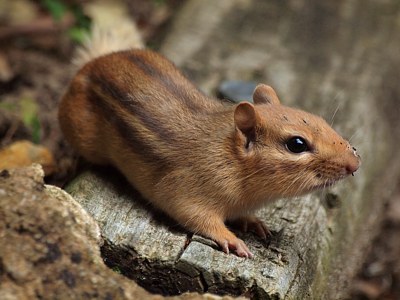
|
|
The E-620: The first draft of the Review and Reference of this camera is done; it took more than three weeks: too many other things to do (at work and home, that is). The article is basically done, but I still need to provide more illustrations, plus the usual process of additions, corrections, and clarifications; another month or so.
The bottom line: this is a good camera, but no match for the E-30. The size factor, ergonomics, and features can be argued upon, but not the image quality. See the review for yourself; there is also A side-effect of this effort is that my E-30 report has been updated: some additions, but also a series of minor changes and corrections (including those to some other, related articles). | |
|
The E-P1 is here! After being announced on June 15, this innovative Micro Four Thirds camera by Olympus arrived to stores (on some markets, at least) just a week later. Well, it already got a firmware update! Two lenses are also available at the moment.
I expect some people to love it, while others will hate it — not much middle ground. The design is quite radical and refreshingly retro; image quality (reportedly) outstanding, but the concept also involves some painful limitations and omissions. I am sorting things out now, and hope to have a brief discussion of the up- and downsides posted early next week. |
.t.jpg)
|
|
With all this going on, I couldn't get myself to restoring my email system over the last month. Apologies: I am still not receiving (or responding to) my email, none of it. I want to have it done before the upcoming vacation in Poland (starting July 6), where I expect to have some time at hand to catch up. And yes, I think I will be traveling just with the E-620 and the two lightweight kit lenses. Gallery update: the promised Jane's Irises Revisited page has been posted, containing images shot with the E-30. | |
|
Picture of the week: A bearded iris grown by friend's wife. This is the third time I've photographed her yearly crop (see Jane's Irises from five and two years ago). This time I used the E-30, the camera which each time impresses me anew.
Camera: Olympus E-30 Lens: 70-300 mm F/4.0-5.6 ZD at 200 mm
Exposure: aperture priority I should have a full gallery of this session posted within a week or two, assuming no disasters or other distractions. |
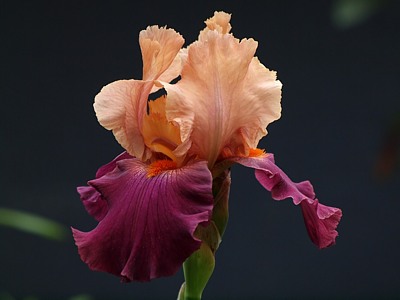
|
|
The hard drive in my laptop died a quiet, sudden death. No real data losses, except for the filed email to be replied to. Sorry: I won't be able to address my email backlog anyway, and I'm still not really replying to the current correspondence; things should be back to normal in two weeks or so. The E-620: If you've 'been waiting for my advice before buying this camera (just kidding!), wait no longer. I've been using it for the last three days, and it does not disappoint in any area. Currently I'm still analyzing the first samples; expect some opinion within the next few days, and a full, detailed review shortly later. | |
|
More image samples from the E-30 — Part 2 contains shots with the 70-300 mm F/4.0-5.6 ZD, and some flower pictures, showing how the camera handles colors: from vivid petals to man-made pastels. Some full-frame, original JPEGs are included.
Some of those images found their way into a new Gallery page: In A Garden Store.
Olympus E-30 with 12-60 mm F/2.8-4.0 ZD at 60 mm; aperture priority |

|
|
Olympus E-450: Take an E-420 from 2008, add three Art Filters, and re-badge it with an incremented model number; yes, you have another "new" camera in your 2009 lineup. The Art Filters are, in my book at least, a feature of rather dubious usefulness, especially with no way to adjust their parameters. For all I know they are implemented entirely in the firmware (the raw-to-RGB conversion routine). | |
|
Still, there is nothing wrong with the new camera, expected around May; the E-450 (or rather E-420+, I would say), shown here in an optional, white leather jacket, remains a very capable and tweakable model at a most accessible price. Just don't think you're being offered something "new and improved". Have a look at my short E-450 article, with some more detail and more product images supplied by Olympus. |
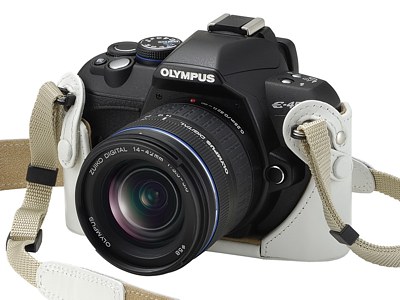
(Promotional image by Olympus) |
|
Three firmware updates from Olympus: the E-30 can be now updated to Version 1.1. The most visible change was getting rid of the sound made by image stabilization in Live View. At the same time, Version 1.4 for the E-3 introduces some further tweaks to autofocusing. The most interesting update, however, is Version 1.2 for the 70-300 mm F/4.0-5.6 ZD lens: it adds the capability of imager (contrast detection) AF in Live View mode. I have installed the updates, and the 70-300, indeed, now allows the I-AF mode to be used in Live View; the AF responsiveness in the Hybrid mode has also improved somewhat — but, as expected, no competition to the phase-detect AF in regular SLR viewing. | |
|
It is this time of the year again: cherry blossoms on The Mall in Washington, DC, last weekend. A windy day, clear sky, huge crowds. The spring season is official now. Camera: Olympus E-30. Lens: 70-300 mm F/4.0-5.6 ZD at 89 mm. Exposure: Aperture priority (0 EV): 1/2000 at F/8, ISO 400, sunny WB. JPEG postprocessing in Corel Photo-Paint. |

|
|
A new article in my E-3 series: Dark Noise and Hot Pixels in the Olympus E-3. Surprise: generally, the levels of dark noise in E-3 are higher than in the E-510, with or without Noise Reduction enabled. For more, see the full text. Another gem from a press release (this time by Sigma, referring to their new E-P2): "[...] use of a low-pass filter is not needed because full information of light and color can be captured with three-dimensional feeling". How stupid can these things get?
| |
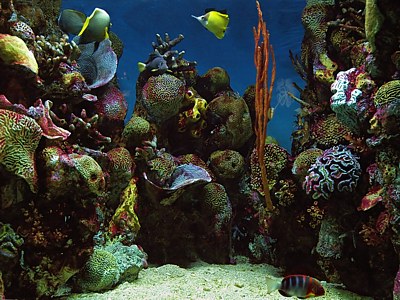
|
New Gallery page: the National Aquarium in Baltimore; shot with the E-510 at ISO 1600.
While usually I am not recommending ISO 1600 with this camera, it may save a day. The place is really dark, and a higher shutter speed cannot be dismissed (in addition to image stabilization). The prints are presentable at 8×10" (although I wouldn't go for 12×16"). Camera: Olympus E-510. Lens: 14-54 mm F/2.8-3.5 ZD at 20 mm. Exposure: aperture priority (-1 EV): 1/80 s at F/2.9, sunny WB. Postprocessing: Corel Photo-Paint with the Neat Image noise removal plugin. |
|
Preparing the ground for testing of the E-30 image stabilization, I posted two general articles on that subject in my Nitty-Gritty section:
This way I was able to remove lots of redundancy in articles on IS on E-510 (most probably also applicable to the E-520) and E-3, making them smaller and more focused. Now there is no excuse not to start working on the E-30. While I do not expect surprises here, this will be the first time I will do the experiment for the 300 mm focal length. My guess is 3 EV of improvement, but we will see in a week or maybe two. The E-620 write-up has been seriously expanded and cleaned up in the last four days; now I consider it quite complete. Yes, it may be not as much of a camera as the E-3 or E-30, but in terms of value for money it beats them both hands down (doing the same, from what I can see, also to any other SLR on the market). Agnieszka, my wife, is coming back from her extended Christmas break in Poland; the site updates may slow down a bit compared to the last month or two. I think she may kick me out of the house, if she gets an E-620 for her birthday. Any other ideas? (Besides, I was already planning to get her a μFT camera...) Additions to the highlight recovery article: three more samples, including Aperture and SilkyPix; I've also added XGA-sized crops for those who would like to have a really close look. Now the piece is, indeed, done, and I am not planning to add any new results. My site font-setting page has been enhanced with a few new scripting tricks. If you are planning to do some serious reading around here, you may want to adjust that to your taste and comfort. After all, the setting is persistent, so you do it just once. (Besides, this is a neat toy; you are unlikely to see it elsewhere.) The Olympus E-620 has been announced last night; a follow up to the E-520 of the last year, and addressed at a similar market segment. | |
.t.jpg)
|
The E-620 sports an adjustable monitor angle, slightly (4%) larger viewfinder, and a 4 FPS sequential rate. (Ah, yes, that's in addition to 12 megapixels.)
It should become available in May. It remains unclear if the E-5xx line will be continued, but I think this would be redundant. |
|
I was able to put together a quick look article, focused mostly on what's new; to be expanded in the coming few days. So far it appears that the camera is destined to become a winner — I do not expect Olympus to go wrong with the image quality — after all, they've got all the right pieces. | |
|
Picture of the week: Fruit on a dinner table, late afternoon.
Camera: Panasonic Lumix DMC-FZ18 Lens: Fixed 4.6-82.8 mm F/2.8-4.2 zoom (28-504 mm EFL) at 18.3 mm (112 mm EFL) Exposure: Program (0 EV): 1/40 s at F/3.6, ISO 200; manual "sunny" WB. Postprocessing: Corel Photo-Paint (slight crop, tonal adjustment, noise removal with Neat Image, sharpening). |
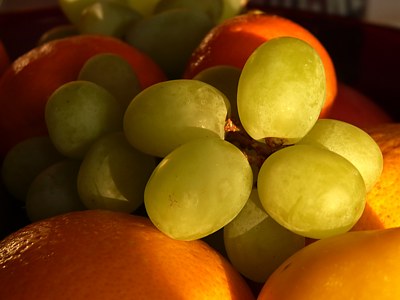
|
|
With a help of no fewer than 17 people from all around the world, I was able to put together a small article: Highlight Recovery from Raw Files. It shows how much highlight detail can you salvage from a slightly overexposed raw image file. Have a look and make your own mind. | |
|
Question: Do camera manufacturers think that their customers are idiots? Answer: Yes, they do. Proof: A fragment from a recent press release: "For maximum enhancement of image beauty, the [model name] has the imaging power to brilliantly isolate one instant in time [...]" This may be the best one I found this year, so far. But it is only February. | |
|
The Bigma review is done, at long last. Started more than two years ago, it was sitting there, waiting until I have the samples shot and scrutinized, and conclusions written. I've got the samples ready last May, but only the last weekend I found time to actually finish the article. Better late than never.
A good (if not outstanding) lens, not for everyone, but capable, in good hands, to deliver very presentable results. Read the whole thing for details. Olympus E-510, Sigma 50-500 mm F/4.0-6.3 DG lens at 337 mm; aperture priority (-0.3 EV): 1/60 s at F/6.3, handheld, WB at 5300°K. |
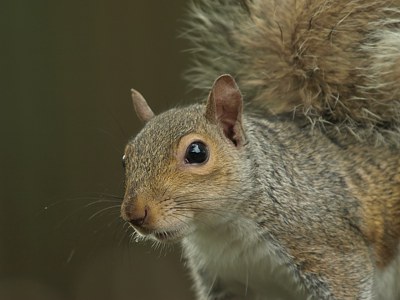
|
|
Highlight recovery from raw files: I started on the article already, with a help from some Readers who were kind enough to send me results of conversion of my sample raw file. At this moment I have results from four different raw converters: Olympus Studio, Raw Therapee, Adobe CS4, and LightZone. Update: Thanks for the help; I think I've got enough examples for the article, including some other converters. Now give me a few days... | |
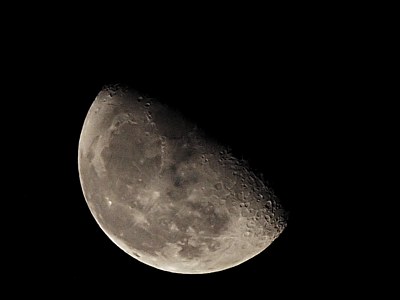
|
The Moon photography article has been updated. I've added example images from the E-510 and E-30 (the latter shot just this weekend), also expanded and revised the how-to information.
Olympus E-30, 70-300 mm F/4.0-5.6 ZD at 300 mm, manual 1/1000 s at F/8, ISO 800, handheld. Postprocessed in The image links to an XGA version in full pixel scale. |
|
Picture of the Week: A friend's best friend, last Sunday, getting acquainted with the photographer. Camera: Olympus E-30 Lens: 12-60 mm F/2.8-4.0 ZD at 36 mm Exposure: Aperture priority (-0.3 EV); 1/80 s at F/6.3, ISO 800, sunny WB; available light from a window. Postprocessing in Corel Photo-Paint. (Click on the picture to see it in higher resolution.) |
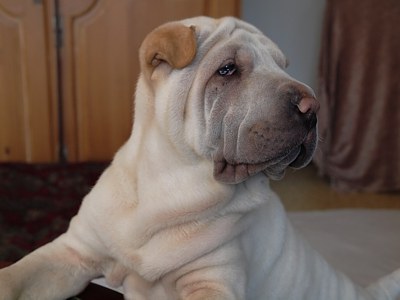
|
|
The devil is in the details. With the E-30 being so similar to the E-3 in many aspects, I expected my next related effort, the article on Customizing the E-30 to be a simple remake of such an article on that camera. Not so: it turned out that the E-30 has about 20% more adjustment options (some minor, some not), and many inherited functions underwent subtle changes. In the process, the The email starts flowing in, a usual reaction after I post such articles. With the main part of the E-30 work out of the way, now I can start reading it, responding to it, and, most importantly, correcting errors an omissions found by the Readers. I consider myself lucky having a readership which cares; this is instrumental in keeping the contents accurate and useful. Thank you all. A stick in the anthill: calling exposure compensation in raw conversion an urban legend caused more reaction than I expected, from both sides of the argument. I stick to my guns: if this is capable of saving overexposed highlights better than the in-camera raw-to-JPEG conversion, this means that the latter just does not work right, not utilizing the full range of recorded information. The JPEG engine in E-System cameras is very good in this, and a number of samples I've tried led me to believe what I have written. (This may not be true for cameras using sub-par JPEG engines.) And no, adjusting the luminance transition curve in that process does not help: it may bring out some detail just below the saturation level, but not above it. Basically, this can be done as well on a JPEG image. Still, I've been using only Olympus Studio for this task. If you believe that your favorite raw converter can do a better job, try it on the raw sample provided in the article and send me the result with some details. I will be happy to stand corrected (and to learn something in the process). A quote from a recent Ken Rockwell article: "I'm consistently amused by innocent hobbyists who go through the aggravation of shooting raw files just to get what they think is marginally better technical quality [...]". (Check also a more technical write-up by Ken on the same subject.) One point where I disagree with Ken: film does not have better longevity than digital storage: he should have seen my slides from the Seventies. Maybe if stored under archival conditions...
| |
|
It took me longer than expected, as things are not so simple as they may seem, but the new article, Random noise in the E-3 and E-30, is ready. Now I am sure that the noise levels in the E-30 are consistently a bit higher than in the E-3, at all ISO values. These are per-pixel (not per-area) results, but even after giving the E-30 the allowance it deserves because of higher pixel count, most of the difference remains. The good news for the E-30 is that at ISO 1600 and above its noise is cleaner: less clustering, no banding, and no color shift. For details read the whole article or just my conclusions. All cameras filter the noise; this comes at the expense of other image attributes (notably, detail level), therefore the amount of filtering used is largely a matter of manufacturer's choice. Many people are obsessed with noise, perhaps just because they can inspect their images at full pixel scale; I consider this a non-issue for a great majority of cameras. Still, I had to do this comparison, as it helps to know the issue before disregarding it. The persistent urban legend that you can correct overexposure working with raw images has been revisited in some new E-30 examples, where both raw and JPEG files were used; see my updated (again) Part 1 of E-30 samples. I've added the E-3 to the new card speed comparison. With a modern Compact Flash card both E-3 and E-30 save a raw image file in just above 0.4 of a second. As files in my tests were about 15% larger for the E-30, obviously, this camera has a 15% higher MB/s rate. In less than three years we may see cards capable of keeping up with 5 FPS sequences. The E-System index page has been cleaned up, checked, and updated, so that you can more easily find all the articles added recently. | |
|
Another new article: Card Speeds with Olympus E-System Cameras presents more accurate results for the E-510 and E-30 using various Compact Flash and xD-Picture cards. The E-3 will be added at a later time. Photos with flash (FL-36) added to E-30 Image Samples, Part 1. | |
|
This was a busy week, but the snow we had in Maryland yesterday kept me at home. Sharing my time between detecting flights put on hold in recorded radar data and adding to my E-30 Review and Reference, I succeeded at least in finishing the latter. Errors, typos, and omissions may still have to be addressed, but the article is done. The list of recent changes is shown at the top, and you can check those out without re-reading the whole thing. My measurements of noise levels in the E-30 and E-510 brought quite interesting results. While the former looks less noisy, the figures are sometimes in favor of one camera, and sometimes the other, depending on image-processing parameters. This is greatly affected by the noise filtering and sharpness settings, and both cameras seem to be tweaked differently in these aspects. I need a few more days to sort things out. | |
|
ISO 3200 on the E-30: Just to see if it can be made usable by noise removal in postprocessing, I did exactly that using the Neat Image application. Guess what: this actually works, making the images presentable in 12×16" (30×40 cm) prints! Details and sample images — in another new article: E-30 Noise Removal with Neat Image. While using that program, I decided to make a number of presets and noise profile files to be used with the new camera. Doing that, I discovered (shame! only now!) that Neat Image has a handy profile display option, which shows numeric data on the noise. Seems like they are using the full Fourier analysis of the noise spectrum, which makes the results more meaningful than just the luminance sigma; this I cannot ignore. I'm busy now doing a systematic test of the E-3 from this angle, and also a test of my E-510, for comparison. I'm already getting emails from Readers, reporting typos, errors, and omissions in the E-30 report. Thank you all; I'll be going through those tomorrow, and replying to emails at a later time :) | |
|
E-30 Review and Reference, the first version (not a draft, as it seems to be fairly complete) is already available. Last night I also added more images to Part 1 of the Samples, and tonight — a Full ISO Range sample page, showing how the imaging pipeline is doing between ISO 100 and 3200. Actually, not bad! By now I have no doubt that the E-30 is so far the best camera from Olympus, as happy as I might have been with previous models. While it faces a stiff competition from the Canon 50D and Nikon D90 (both I consider very attractive, with, surprisingly, a preference for the D90, even if it has more modest specifications), I still believe many, not just the current Olympus users, will put the E-30 at the top of their shopping list now. | |
|
I just posted my first samples from the Olympus E-30; judging from my email, quite a few people may be interested. Have a look; the set will be expanded within the next few days. The first draft of the review is being cleaned up before release. | |
|
Just a quick note: my British friend and a fellow Olympus aficionado, John Foster, is in the process of changing the hosting services of his biofos.com domain. For the next day or two his site can be accessed at the temporary address: biofos.powweb.com; after that, as soon as name servers are done propagating the change, things will be back to normal. Another day with the E-30, the review is progressing just fine (90% of the text done, some measurements and checks ahead). In the meantime, my First Look article has been updated with the impressions from using the camera. I've spent most of the day with the E-30, and yes, I do like it a lot already. More than the E-3, to be frank: the camera fits better in hand, the reduction in size and weight is noticeable, and there are (what seems like) dozens of small but thoughtful improvements. It also seems that nothing was broken in the process (even if one or two things which were wrong in the E-3 remain unfixed). Oh, yes, the level gauge is really ingenious and well-designed, and the viewfinder, while not a match for the Big Bro, is quite nice. The image quality seems to be at least as good (which is a lot), and the 12-60 ZD puts the extra pixels to good use. I've got the first samples, too, so far in default settings, slightly clouded afternoon sunlight. They were taken with the 12-60 mm ZD, which needs no comment, so I'm looking at exposure, colors and tonality now. | |
|
Again, I'm mighty pleased. I can already tell the E-30 does not suffer from excessive sharpening, noise filtering, or antialiasing; it also seems more forgiving about the highlights than the E-510 in out-of-camera JPEGs. Here is one example from my first day with the E-30; I will need a few days to analyze and post the full first set, certainly not later than Saturday.
Olympus E-30, 12-60 mm F/2.8-4.0 ZD at 55 mm. Aperture priority (-0.3 EV): 1/200 s at F/8, ISO 100. Auto WB; sharpness, contrast, saturation, gradation, and noise filtering at default values. Saved as SHQ (1:2.7) JPEG; no manipulation except of resizing and re-sharpening. For the full, original frame (7.5 MB) click here. |
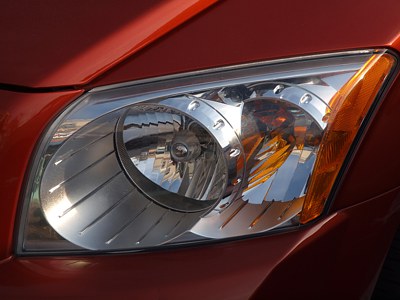
|
|
I'm working on the full review of this camera, about 60% done with the text. Even if much of the information is identical or similar to the E-3, every little detail has to be verified, and there are hundreds of them. If I'm lucky, the first draft should be out on Sunday or so. This was not helped by the recent emergency landing (if I can use this word) of the Flight AWE 1545 on the Hudson River. Remember, I have a daytime job, too; having spent a few hours analyzing the traffic of that day and area, I am amazed by the cold blood of the pilot: at 15:26 or so he knew he lost the engines, and two minutes later, after crossing the Manhattan and losing 200 ft in altitude, started the landing approach along the waterway, executed with handbook perfection. Click here to see a picture based on the recorded radar data (courtesy of my employer, see the copyright note), following the flight from a minute or so after takeoff to (almost) the touchdown: the recording ends at 300 ft (90 meters). Sorry for the distraction, but I wanted you to know what sometimes keeps me from updating these pages as frequently as I would like to. The E-30 is expected to hit store shelves the coming week, and I've spent the last few days working on a technical review: there are many things I can do before I actually get the camera. Yes, after seeing some samples available at independent (i.e., non-Olympus) Web sites I decided to bite the bullet and get one, to replace my E-510 (with which I'm still very happy). I'm still going through the user manual, available from Olympus as a PDF file. As always with Olympus manuals, I have mixed feelings here. On one hand, the 150-page booklet took lots of dedication and effort. On the other — there is no visible improvement from the previous Olympus manuals. First, many non-trivial features are just mentioned in a single line, without even a rudimentary explanation, while some obvious ones (like changing the battery) are given a full page each. Second, some factual errors from the E-3 instruction remain uncorrected in the new one (for example, the exposure program graph contains two independent errors). Last but not least, the English used in writing ranges from bad (often unintentionally comical) to abysmal and/or incomprehensible. A corporation of this size and standing should be able to hire someone speaking decent (if not fluent) English and, preferably, with some elementary knowledge of photography, to do the final editing. Is this too much to ask for? This is not just the matter of practicality, but also of image. As always, my work on the review is having a side effect: some of the existing pieces have been updated, and two new, small articles are being posted today. Here is a comparison of apparent DSLR viewfinder sizes, including the latest models from Canon, Nikon, and others. Complaining about the "tunnel vision" in the E-520 is easy; seeing if and how that actually shows is a different thing. Did you know that the apparent finder height in the E-520 (or E-510 and E-4x0) is exactly the same as that in the new Canon 1000D (Rebel XS) and a tad larger than in the Sony A350? Have a quick look. Then, I had to vent my feelings about the xD-Picture memory cards, which Olympus keeps stubbornly using in their cameras. While a draft of that article was written almost a year ago, only now I had the time to finish it up, and here it is: The xD-Picture Card Abomination, telling you things Olympus does not want us to know. And, yes, I am back in the States, freezing my rear end off and watching geese walking over the frozen lake in front of my house. I'm still very slow replying to any email, so please understand. | |
|
New Gallery page: Southern Arizona. At long last, I found some time to postprocess my pictures from the October trip. Everyone has a picture of a saguaro against a sunset, why not I? This one was shot in the Alamo Canyon at Organ Pipe Cactus National Monument. (The colors are fake, but at least the sunset is real.) I was traveling light this time: an E-510 with just two lenses: the 14-54 and 70-300 mm ZD, and a C-5060WZ as an emergency backup (my wife ended up using it all the time, and she likes it a lot). Olympus E-510, 14-54 mm F/2.8-3.5 ZD, aperture priority (-0.3 EV): 1/250 s at F/8, ISO 100. Postprocessed in Photo-Paint: tonal adjustment, color manipulation. |
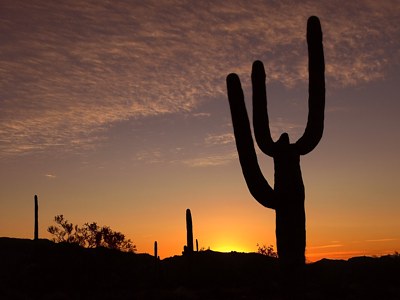
|
 |
 |
 |
 |
 |
 |
 |
| Home: wrotniak.net | Search this site | Change font size |
| Posted 2006/01/30; last updated 2009/12/13; cleaned up 2013/11/01 | Copyright © 2006-2009 by J. Andrzej Wrotniak |